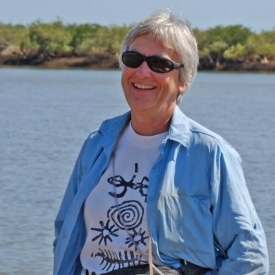Our research focuses on animal-plant interactions in forested ecosystems. We study the interactions of plants and insects in temperate forests and tropical forested wetlands, with a keen interest in the ecological roles of herbivores in forested ecosystems and how they affect and are affected by resource availability.
For the past 25 years, we have been studying the effects of nutrient availability on animal-plant dynamics, nutrient cycling, and patterns of nutrient conservation in mangrove ecosystems in the Neotropics. We also have been attempting to determine the role of wood borers and other endophytic herbivores on plant architecture, growth, reproduction, sex expression, nutrient cycling, and community structure in forested ecosystems.
Animal-plant interactions are critical components of many ecological processes in forests, such as seed dispersal, pollination, or community structure. In both temperate and tropical ecosystems, herbivores play important ecological roles in nutrient cycling, gap formation, and succession, and influence the composition and hydrology of forests.
By primary consumption (i.e., herbivory), animals can cause structural and functional disruption of primary and secondary growth of trees and shrubs. Herbivores can prune, weaken, or kill trees, reducing the timber quality of commercially important species. Forests of trees weakened by drought, nutrient deficiencies, air pollution, and other environmental stresses become more susceptible to outbreaks of insect herbivores. Herbivores that attack apical meristems affect plant architecture, growth, reproduction, and sex expression.










































